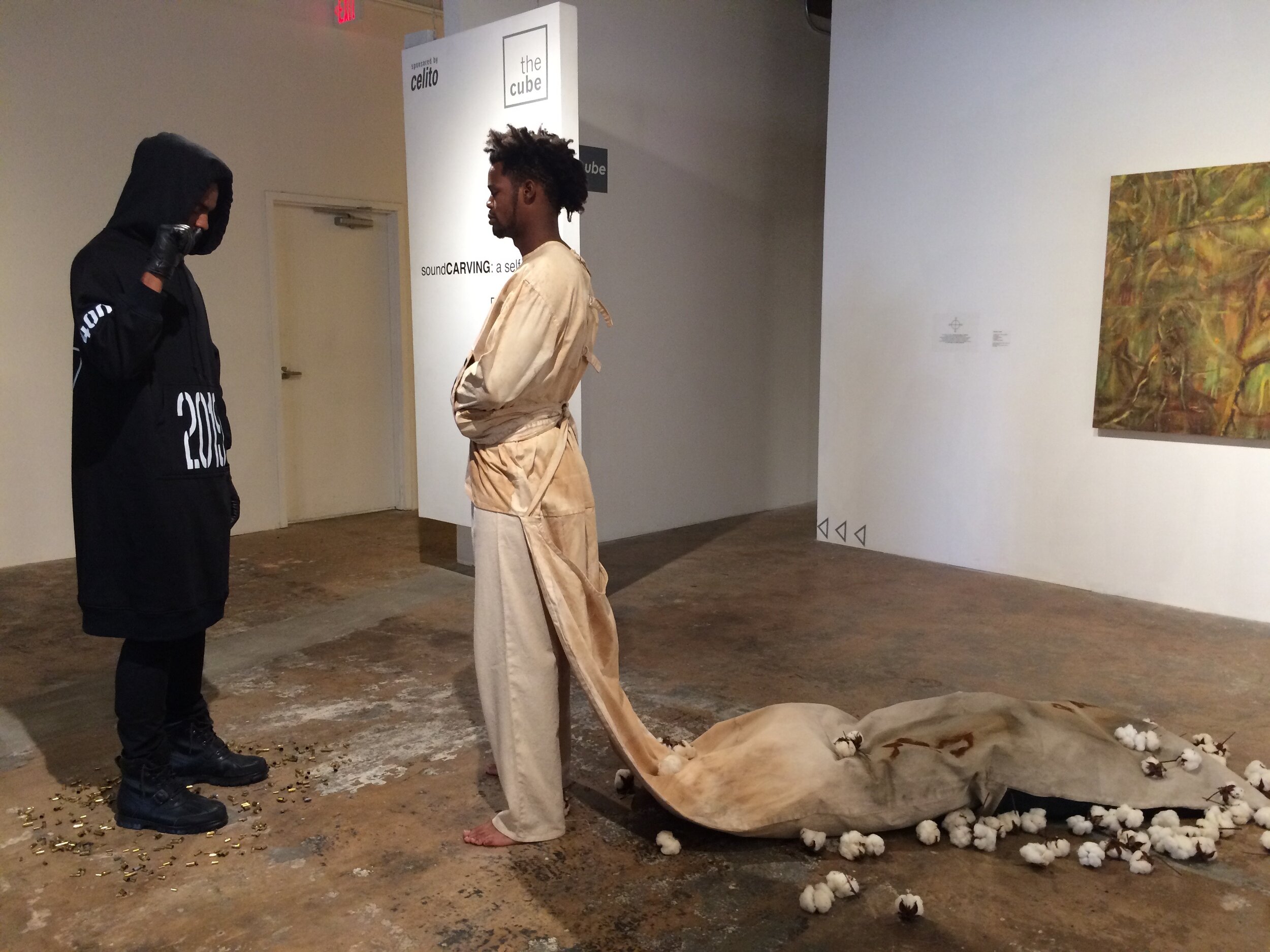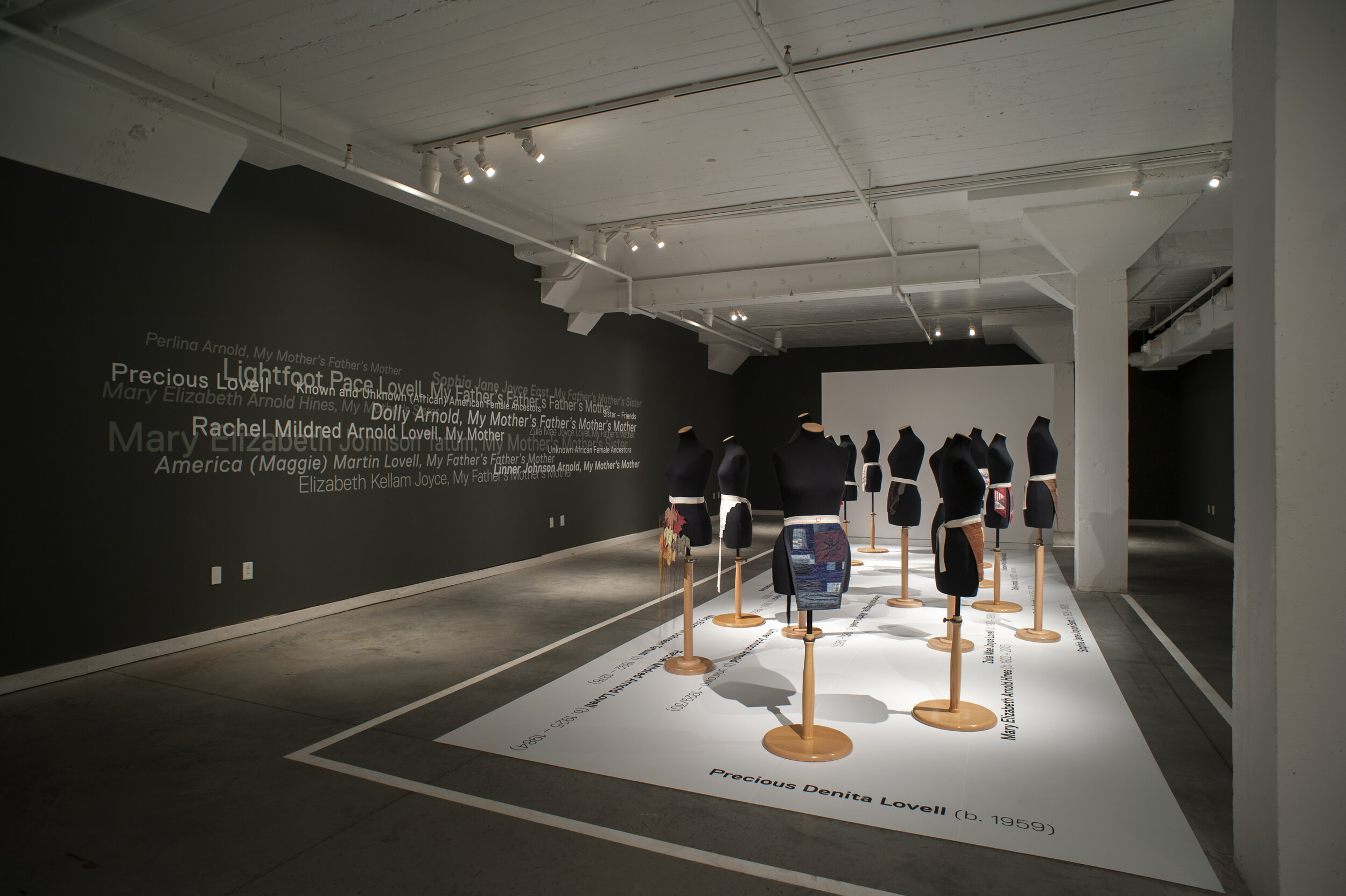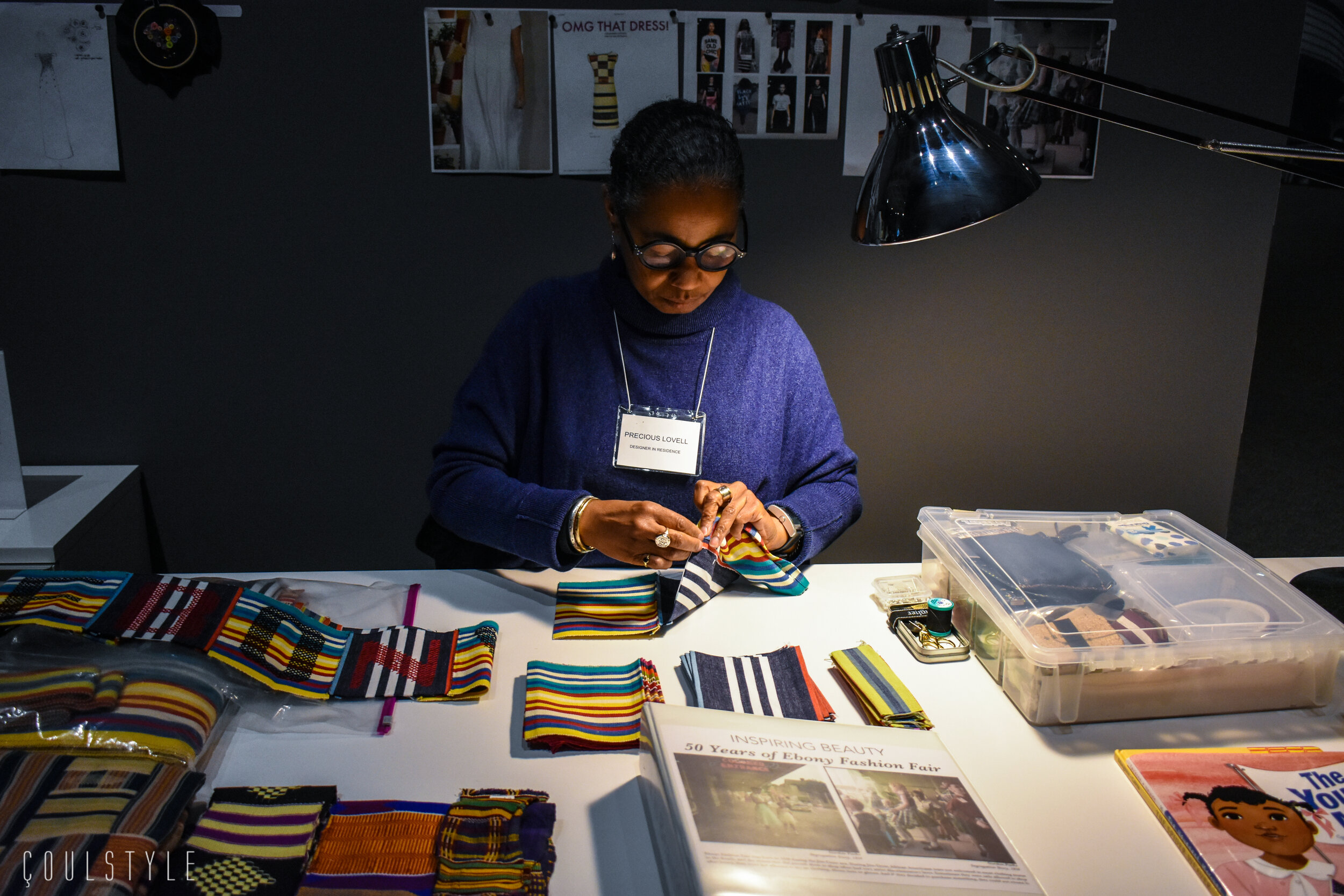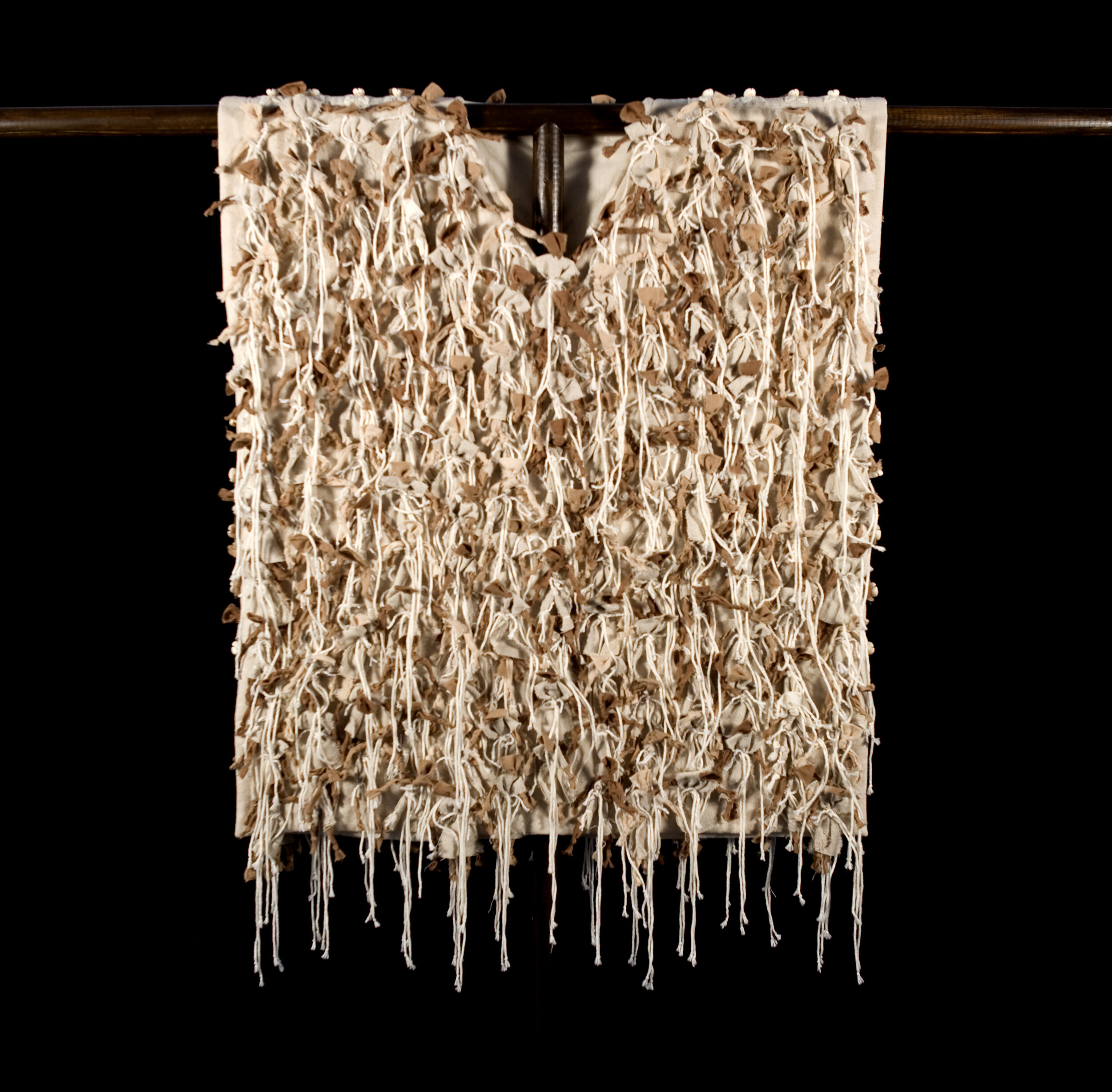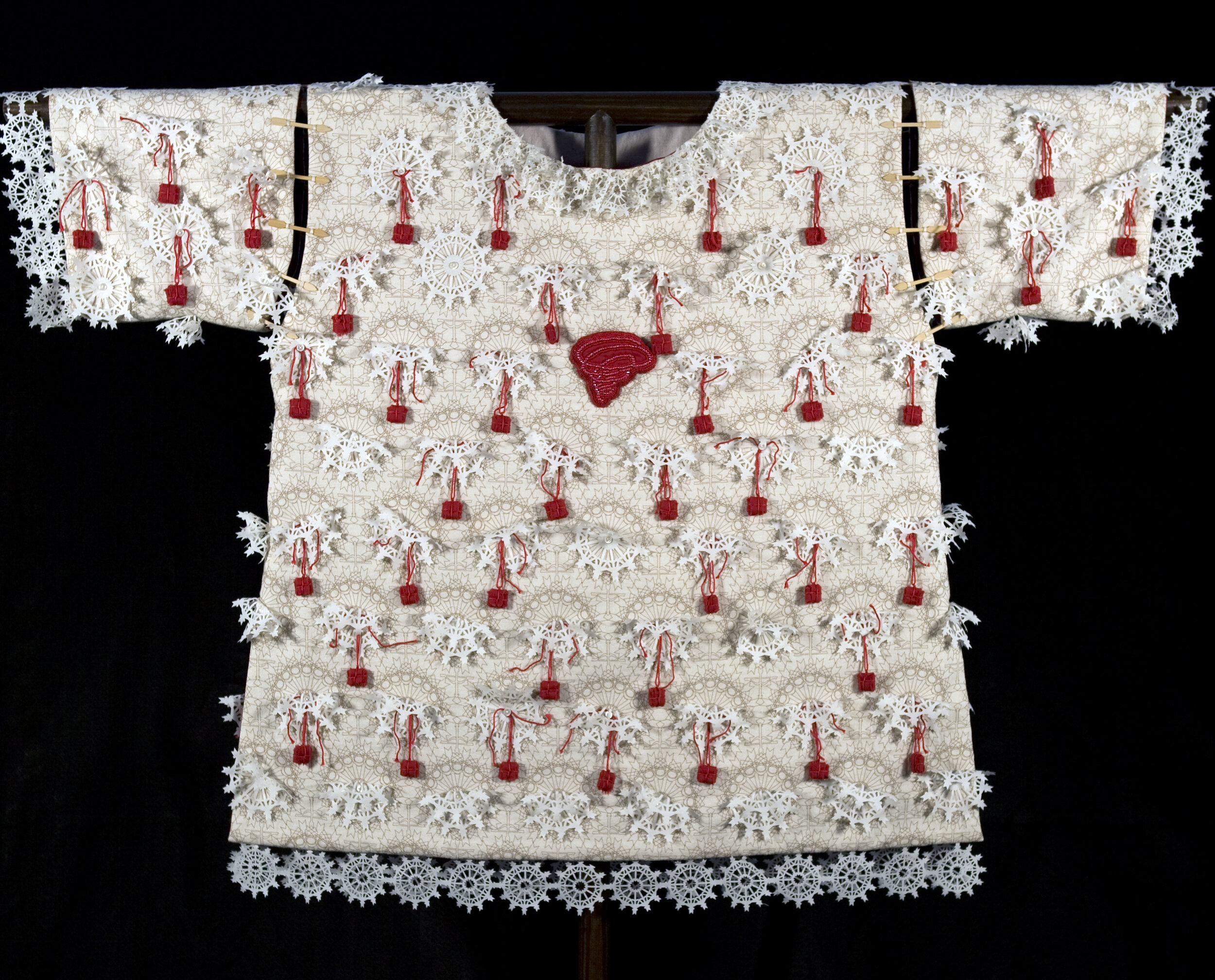PRECIOUS D. LOVELL
2022 Brightwork Fellow
Acknowledging the original stewards of this land, the Tuscarora, and the many Indigenous Peoples who continue to inhabit the Raleigh area, I am truly honored to have been selected as the inaugural artist-in-residence for the new era of the Brightwork Fellowship. As someone who came into their creative practice as an artist later in life, who is Black, a woman and over 60, this is a special opportunity, when so much of American society, and its art world, celebrates things that are the polar opposite of everything that I am. During this residency I plan to continue my exploration of the narrative potential of cloth and clothing and keep this quote by artist Elizabeth Catlett in the forefront of my mind:
"Art is only important to the extent that it aids in the liberation of our people."
- Precious D. Lovell
Below: Listen to Precious Lovell discuss her past work with Michael S. Williams, curator and founder of The Black on Black Project, as part of his Curated Conversations series. In the conversation she discusses her life, creative practice and the culminating exhibition from her Brightwork Felloship exhibition, Ex-Domestication.
BIO
Precious D. Lovell transitioned from a twenty-year career in fashion design in New York City to one of educator and contemporary artist+designer+maker. She holds a Master of Art and Design with a Fibers and Surface Design concentration and a Bachelor of Fine Art in Fashion Design. Precious has delivered lectures at universities and museums and presented at national and international conferences on clothing and cloth of the African Diaspora. Her socio-cultural creative practice focuses on themes related to cultures of African descent. She has taught fibers and fashion design at universities in the US, Qatar and South Korea and on a voluntary basis in Ghana and Cambodia. Precious has lived in three countries other than the US and traveled to 45 countries researching and collecting textiles and clothing. Her work has been exhibited in the US and internationally.
ARTIST STATEMENT
My creative practice explores the narrative potential of cloth and clothing. When I pick up a piece of fabric, a needle, and thread, I am reminded of how stories and histories are revealed in cloth and clothing. Dismissed and devalued techniques traditionally considered “women’s work” including sewing and needlework are the foundation of my practice. Through a love for making I continue the labor- intensive multigenerational craft practices of my ancestors. I combine these traditional craft-based textile skills with contemporary technologies in the production of my work.
I see cloth and clothing as a visual language. As I explore this language, I try to discover a vocabulary that speaks of the extraordinary within these ordinary materials and objects, uncovering stories through color, texture, pattern and form. Cloth and clothing artifacts have served as cultural indicators throughout history. I believe they can tell us as much about a society as a painting or sculpture. Every day we attach ourselves to cloth and clothing and use it to express and define ourselves either consciously or unconsciously. I use cloth and clothing as canvases which I embed with meaning. These artifacts, in human scale, serve as a point of departure for my work to establish human relationships between the work and the viewer. My intention is to expand viewer expectations beyond preconceived associations and encourage new relationships and experiences by transforming these ordinary three-dimensional objects with alternative visual cues.
Excluded, under-told and forgotten stories combined with a passion for making and materials merge and unfold as new storylines. These narratives, whether personal or universal, include social and cultural commentary, documentation, and history around the experiences of the African Diaspora, her-stories and the experiences of the disenfranchised. I use my creative practice to balance and counter the missing, distorted, and fabricated stories of the traditional historical narrative. My work is an ongoing examination of who I am, where I fit and how I choose to participate in the historical narrative. Whether expressing memory, history or hope, ultimately, I am telling stories of liberation and survival, through my work.
WORK BY PRECIOUS D. LOVELL
TITLE: Legacy of the N-Word: N-slaved, N-carcerated, N-sanity, N-destructible! (installation view, BOBV2/Visual Art Exchange) DATE: 2017 DIMENSIONS: Human Scale Installation View MEDIUM: CLOTH AND CLOTHING
TITLE: The Ties That Bind (installation view, CAM Raleigh) DATE: 2017 DIMENSIONS: Human Scale Installation View MEDIUM: CLOTH AND CLOTHING
TITLE: Blood Sweat and Tears (installation view, SECCA Southeastern Center for Contemporary Art) DATE: 2012 DIMENSIONS: Human Scale Installation View MEDIUM: CLOTH AND CLOTHING
TITLE: Wangari Maathai (War Shirt) DATE: 2017 DIMENSIONS: Human Scale (47.5" x 6" x 36") MEDIUM: CLOTH AND CLOTHING
TITLE: Designer in Residence for Inspiring Beauty: 50 Years of Ebony Fashion Fair (North Carolina Museum of Art) DATE: 2017-2018 DIMENSIONS: N/A Image Credit: ÇOULSTYLE
Title: Freedom Seekers (War Shirt) Date: 2019 Dimensions: Human Scale Medium: CLOTH AND CLOTHING This war shirt honors 45+ African American female Freedom Seekers (aka runaways) from Wake County, NC. Created in response to a quilt top made by African American quilt maker Bertha Bridges in 1940 for the exhibition QuiltSpeak: Uncovering Women's Voices Through Quilts for the North Carolina Museum of History in Raleigh, NC.
Title: Harriet Tubman (War Shirt) Date: 2009 Dimensions: Human Scale Medium: CLOTH AND CLOTHING
Title: Negro Washerwoman (War Shirt) Date: 2016 Dimensions: Human Scale Medium: CLOTH AND CLOTHING
Title: Zeferina (War Shirt) Date: 2010 Dimensions: Human Scale Medium: CLOTH AND CLOTHING



